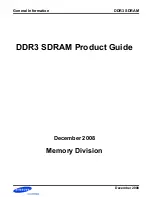
P9415-R-EVK Evaluation Kit
R16UH0015EU0100 Rev.1.0
May 27, 2021
Page 20
Section 0 current is the point where the internal rectifier changes bridge configuration from half-bridge to full-
bridge. In the default configuration, If VOUT is set to less than 7V, section0 current is 288mA. If Voutset is higher
than 7V, section0 current is 384mA, section2 is not used and section3 starts from 384mA. There is around
±30mA load current hysteresis for changing the FOD sections. These settings can be changed using the
P9415-
R Wireless Power Pro GUI
.
The formula of Rx Reported Power is:
𝑅𝑅𝑅𝑅
𝑅𝑅𝑅𝑅𝑅𝑅𝑅𝑅𝑅𝑅𝑅𝑅𝑅𝑅𝑅𝑅
𝑃𝑃𝑅𝑅𝑃𝑃𝑅𝑅𝑅𝑅
[0. .5] =
𝑃𝑃𝑅𝑅𝑃𝑃𝑅𝑅𝑅𝑅
(
𝑅𝑅𝑅𝑅
𝑅𝑅𝑅𝑅𝑑𝑑𝑑𝑑𝑑𝑑𝑅𝑅𝑅𝑅𝑅𝑅𝑅𝑅
𝑅𝑅𝑅𝑅𝑃𝑃𝑅𝑅𝑅𝑅
)
∗ 𝐹𝐹𝐹𝐹𝐹𝐹
𝐺𝐺𝐺𝐺𝑑𝑑𝐺𝐺
[0 … 5] +
𝐹𝐹𝑂𝑂𝑂𝑂𝑂𝑂𝑅𝑅𝑅𝑅
[0..5]
Place the receiver with the P9415-R on the Nok9 FOD transmitter. Ramp the current on the output of the P9415-
R in steps of 50mA to 100mA and monitor power difference between the Nok9 transmitted power and the
receiver reported power value. The difference should be within maximum Power loss delta as shown in Table 7.
If the difference exceeds the maximum power loss delta, adjust the FOD gain or FOD offset of that particular
output current section to bring the difference back to within range. The AP can modify the FOD gain and FOD
offset by writing to the Foreign Object Detection Customer Registers (0x68-0x77). In the final product, the AP
can use the VRECTON interrupt or battery charger interrupt as a trigger to update the FOD registers.
12.2 FOD Parameters in Transmitter Mode
For a WPC power loss foreign object detection to function effectively, the transmitter must set the FOD threshold
at a reasonable value by accounting all its known losses such as Coil resistance loss and losses because of
metal around the coil integrated into the product. In the power transfer phase, the P9415-R will continuously
calculate the difference between its measured transmitted power and RPP packet information received from the
receiver. If the difference is higher than the FOD threshold, the P9415-R presumes that there is a foreign object
(FO) between Tx and Rx that is absorbing the transmitted power and will stop the power transfer to avoid
heating of FO.
FOD threshold value changes based on the Received Power Packet value (RPP) from the receiver. In the
default configuration, If RPP is larger than 3700mW (FodSegThd), the FOD threshold is -100mW (FodThdH) and
if RPP is less than 3700mW, the FOD threshold is 800mW (FodThdL)
The FodSegThd, FodThdH, and FodThdL are configurable by config table in MTP using the P9415-R Wireless
Power Pro GUI.
FOD criteria: FOD threshold > Transmitted Power (PPT) – Received Power (RPP)
13. I2C Function
The P9415-R uses standard I2C slave implementation protocol to communicate with a host Application
Processor (AP) or other I2C peripherals. The I2C slave address is decided by GP4 voltage. During the P9415-R
power-up, if the GP4 pin is pulled down, the I2C address is 0x3B. During the P9415-R power-up, if the GP4 pin
is pulled high, the I2C address is 0x3F.
The communication protocol is implemented using 8 bits for data and 16 bits for addresses. Note that some
values require multiple registers and therefore span multiple addresses. For example, the address of the device
ID high byte is 0001HEX and the low byte address is 0000HEX.
The AP can write to only the registers that are marked as Read/Write (RW). Registers marked as Read Only (R)
should never be sent a Write command. Likewise, register locations marked Reserved should not receive a
Write command. When writing to a RW register that contains a combination of RW fields and reserved fields, a
read-modify-write should be performed to the intended bit/field only. All other bits, including reserved bits should
NOT be modified.
















































